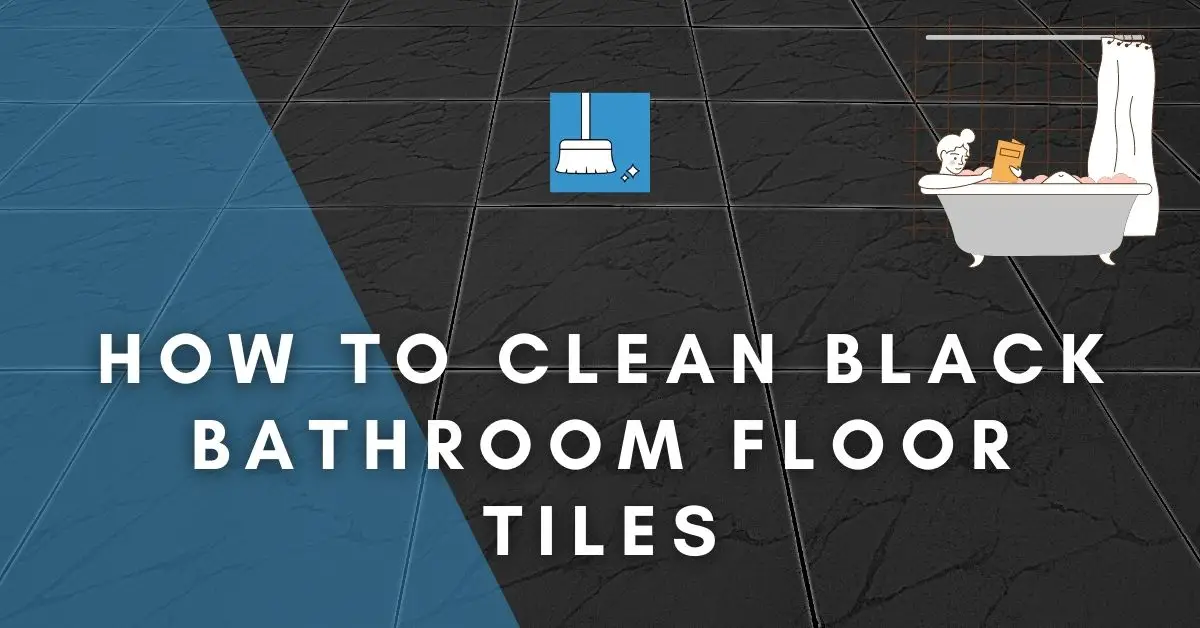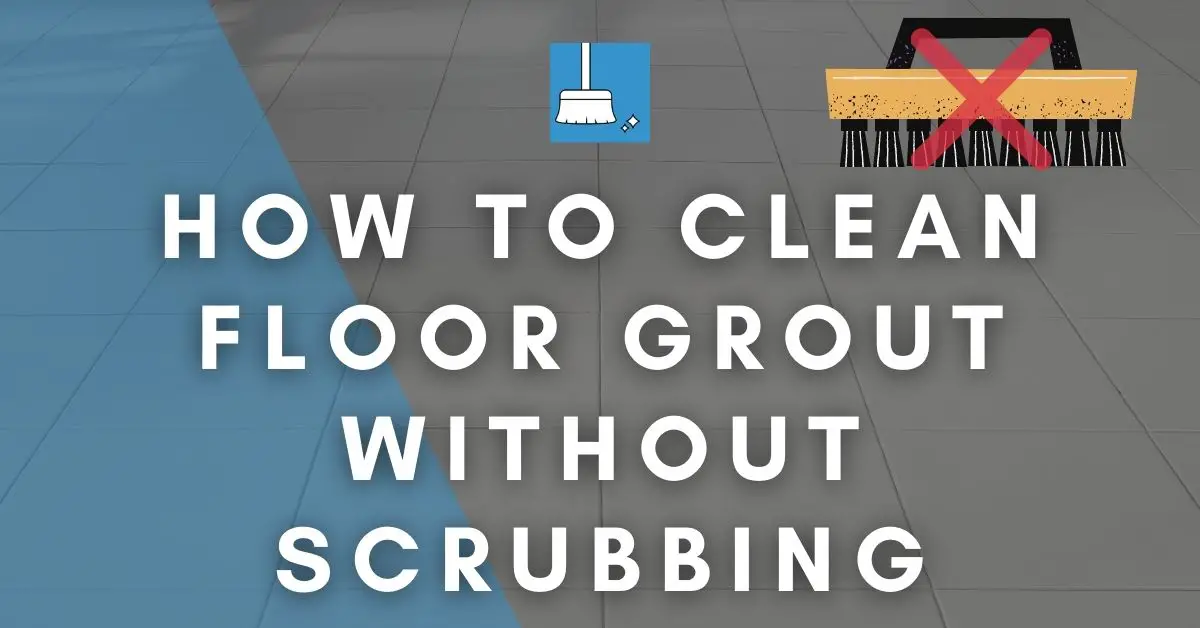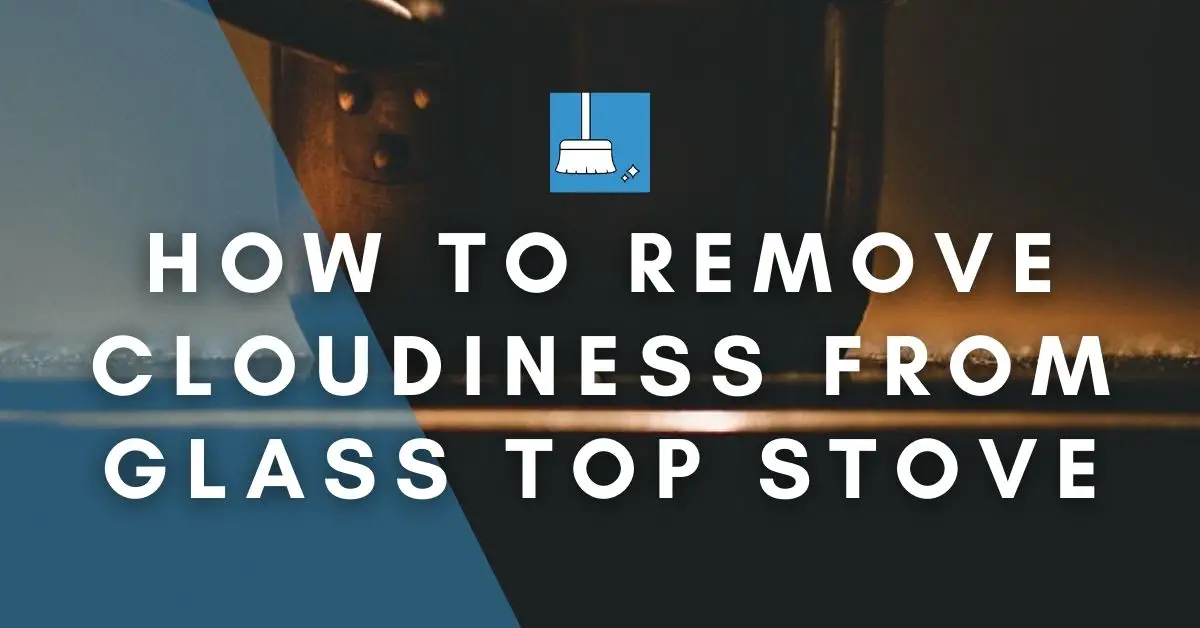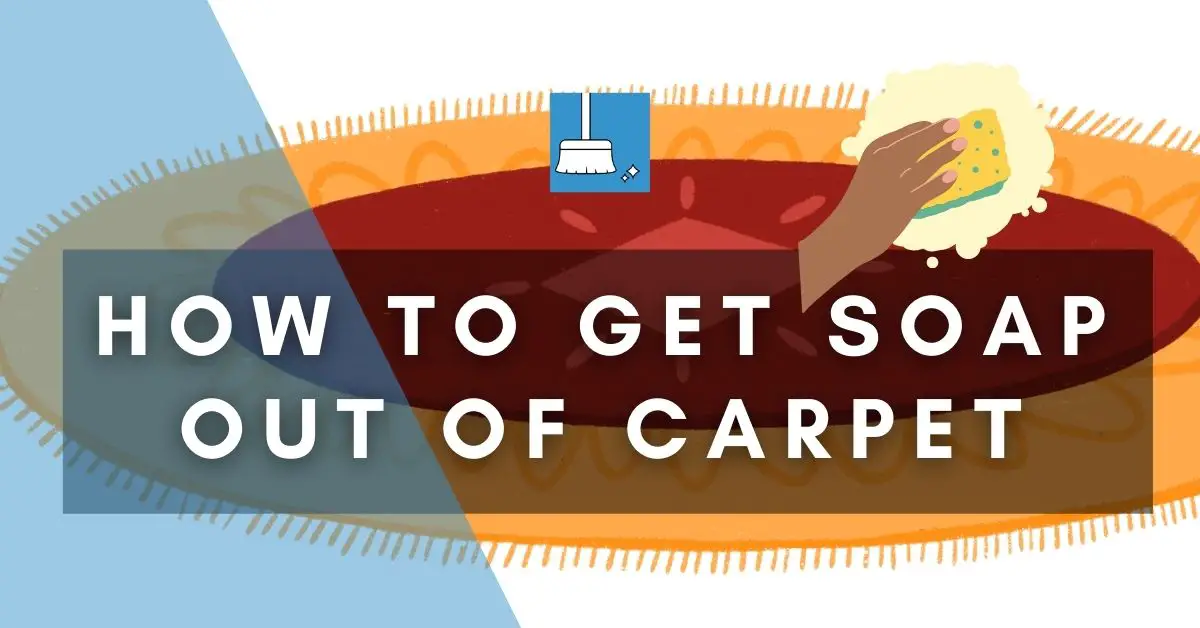Are you one of those rare people who got black tiles installed in their bathrooms?
You’ve got a really unique taste!
Now, one would expect that black tiles should be easy to clean because of their color, unlike white ones as they are so very magnetic for those stains and that dirt as the stains really stick out on white tiles, but that is not often the case.
Definitely, you have been struggling with all those scum stains and unnoticeable dirt that hides in your tiles. I feel your pain!
I have many methods for you to get rid of all the unwanted stuff from your dear black tiles.
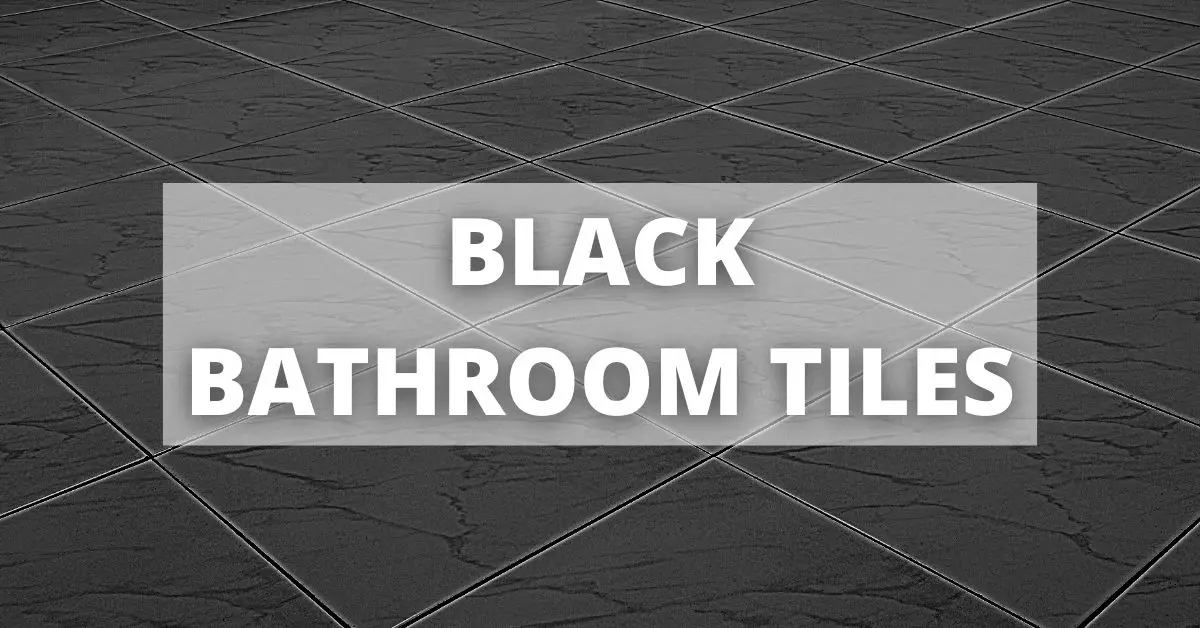
Common Types of Stains on Black Bathroom Floor Tiles
Soap Scum
Soap scum is the white soap residue surrounding the surfaces of bathtubs, sinks, and floor tiles. It is formed due to the frequent use of soaps and other body cleaning agents in the bathroom. This can make your bathroom floors slippery.
Hard Water
This is another predominant stain type found in bathrooms and where water is frequently used. Hard water stains are formed on the tiles as a result of mineral deposits from hard water. They are chalky, but unlike soap scum, they are tougher to remove.
Mold
These are microscopic fungi that thrive in an area with moisture (damp environments), and if your bathroom is not well ventilated, you can have a mold problem. (1) They are easy to spot because of their color and foul smell.
Paint
Droplets of paints from a paint job on your bathroom wall or ceiling can stain the bathroom floor tiles. Even Hair dye can stain your bathroom walls and floor.
There are also many other forms of stains found on bathroom floor tiles, and no matter the kind of stain you are currently looking at on your black bathroom floor tiles, this article has got you covered on the way to go about it.
How to Clean Black Bathroom Floor Tiles (7 Methods)
I have 6 effective methods to clean those black tiles in your bathroom. But before we dig into the actual methods, there’s an important check that you need to make.
Before You Apply Any Method
One of the most important things to note before cleaning your bathroom floor tiles, especially if they are black, is checking if they are porcelain or matte.
If they are porcelain or matte, you need to take extra precautions when cleaning and ensure you do not leave the acid for too long on the tiles. To be on the safe side, use methods that do not involve the use of acids for your matte or porcelain tiles.
Let’s get those tiles clean now!
Method 1: Using Vinegar/Lemon & Water
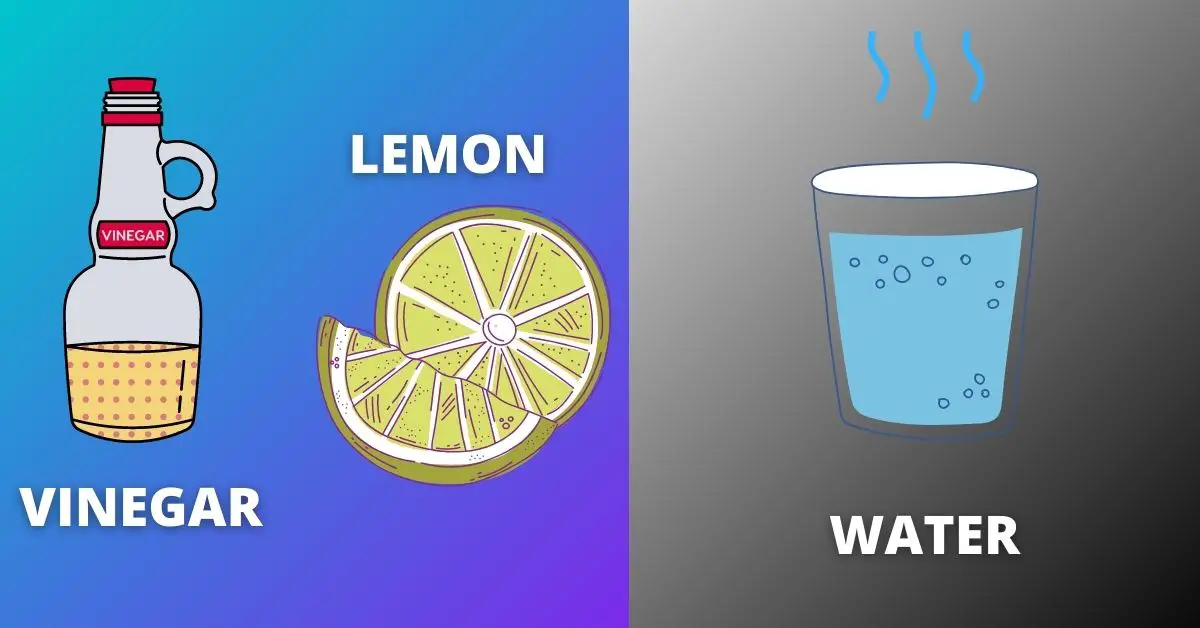
If you haven’t heard about the cleaning power of vinegar, you may be wondering what difference a cooking ingredient will do to keep your bathroom floor clean.
Vinegar has Acetic acid in it, making it an excellent cleaner for removing mineral deposits, oil stains, dirt and grime from surfaces.(2) Using vinegar is good if you are dealing with soap scum or hard water stains.
To clean a black bathroom floor using water and vinegar:
YOU’LL NEED
1- White distilled vinegar
2- Water
3- Spray bottle
4- Sponge
STEPS
STEP 1- Prepare a mixture containing an equal amount of water and white vinegar in a spray bottle.
STEP 2- Spray the mixture on all the affected areas of the tile and leave it for 10-15 minutes to work on the stains. If your bathroom is sloppy, ensure you spray from the highest point on the floor to the lowest point.
STEP 3- With a sponge, scrub the tiles until all the stains are no longer visible.4- Rinse the floor with water to eliminate any residue of the mixture and leave the floor to dry.
Another alternative to this method is using Lemon and Water. So if vinegar is not readily available in your house, you can use lemon because of its acidic (Citric acid) and antibacterial properties. It makes a good cleaning and disinfecting agent.
YOU’LL NEED
1- Lemons
2- Water
3- Spray bottle
4- Sponge
STEPS
STEP 1- Cut the lemons in halves and squeeze the juice into your spray bottle. If you need to cover a large area, you can mix the lemon juice with water in a bucket.
STEP 2- Spray the tiles with lemon juice and leave it on the surface for about 10 minutes. (If you use the bucket, dip a mop in the bucket containing water and lemon, and use it to mop the floor).
STEP 3- Scrub the tiles with a wet sponge to clean the surface, and repeat the process until the stains are gone.
STEP 4- Rinse with water and leave it to air dry.
Can it be any simpler?
Here’s another one:
Method 2: Using Baking Soda & White Vinegar
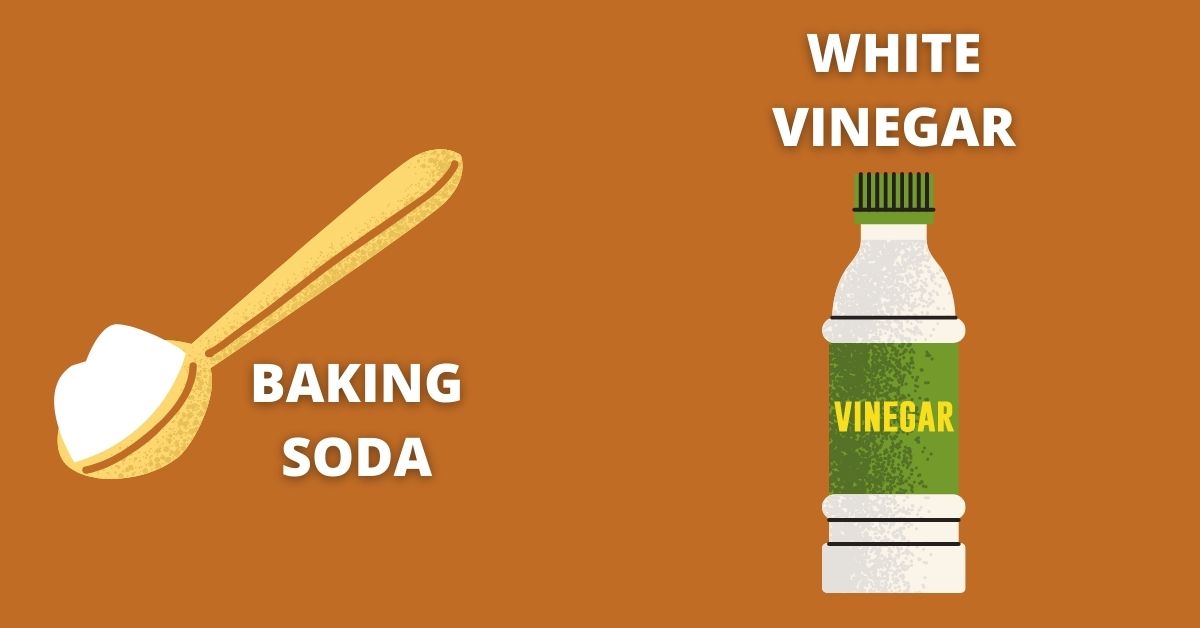
On their own, both baking soda and white vinegar are excellent cleaning products as baking soda is abrasive and Vinegar is acidic but when mixed together, their cutting action becomes even stronger.
YOU’LL NEED
1- White vinegar
2- Baking soda
3- Hard brush / sponge / dry towel
4- Water
STEPS
STEP 1- Prepare a paste-like solution of white vinegar and baking soda using an equal amount of both ingredients.
STEP 2- Apply the paste on the tiles using a brush, sponge, or a dry towel, ensuring you spread it out to reach all the stained areas of the tiles. Leave the mixture on the surface for about 10-15 minutes.
STEP 3- With the same brush (preferably a hard one) or sponge, scrub the tiles thoroughly until the grease comes off.
STEP 4- Rinse the tiles afterward with water and leave the tiles to dry.
Method 3: Using a Tile Cleaner
These cleaner are specifically made for dissolving soap scum and hard water stains. Make sure you pick a non toxic product which is safe for kids. Usually these are safe for cermic and procelain tiles but you may have to watch out for marble and Granite.
YOU’LL NEED
1- Tile Cleaner
2- Sponge / Brush
3- Water
STEPS
STEP 1- Ensure that the tiles are dry before you apply the solution.
STEP 2- Test a small quantity of the cleaner on a small tile area to check if it causes any problems to the tiles.
STEP 3- If there are no problems, spray the mixture on all the stained parts of the tiles and leave it for about 5 minutes but do not allow the mixture to dry.
STEP 4- Using a sponge or a brush, begin to scrub the dirt from the tiles. It is best to do this in sections so as not to leave out any affected area.
STEP 5- Repeat this process until there are no more visible stains or dirt on the tiles.
STEP 6- Afterward, use water to rinse the tiles to get rid of any residue of the solution.
Wasn’t difficult at all! Was it?
Here’s another simple method to use:
Method 4: Using Muriatic Acid
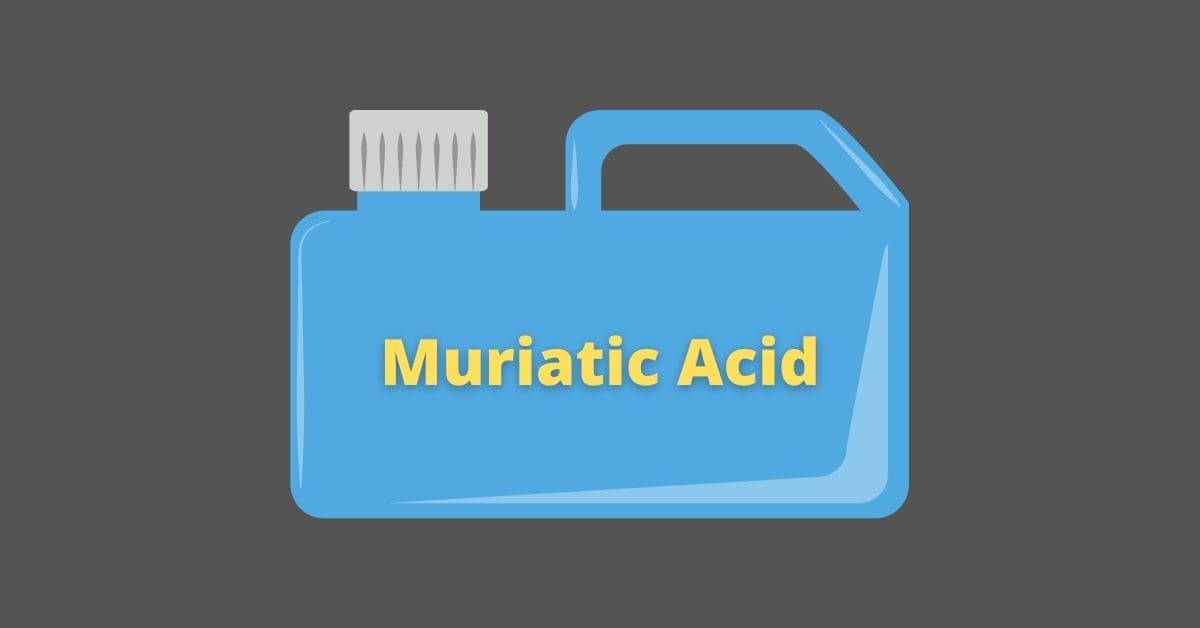
HCL, also known as muriatic acid, is good for cleaning tiles because of its corrosive properties. However, when using it for black tiles, you have to be extra careful because it can discolor your tiles and cause severe damage if it comes in contact with your body.
YOU’LL NEED
1- Protective gear (Gloves, Mask, Safety glasses)
2- Muriatic Acid
3- Water
4- Spray
5- Spon bottle
6- Sponge
STEPS
STEP 1- Put on your protective gear like gloves, face masks, and safety glasses before cleaning, and ensure your bathroom is properly ventilated.
STEP 2- Prepare a mixture of HCL and water using half a cup of acid and half a gallon of water. In most cases, there will be the manufacturer’s instructions on the label. When preparing the mixture, ensure you add the acid to the water and not the other way around.
STEP 3- Fill up a spray bottle with the mixture, and spray the black tiles in sections. This is to ensure that you do not leave the mixture for too long on the tiles. Ensure the acid should not stay for more than 10 seconds on the tiles.
STEP 4- With a sponge, scrub the stained parts of the tiles until the tiles are clean. Rinse the floor thoroughly and immediately after the cleaning process is done.
Muriatic Acid should never come in contact with eyes or skin as it can cause eye damage, burns etc. Make very sure to wear your protective gear. (3)
By the time the floor dries, your black tiles should be sparkling.
Let’s see another method!
Method 5: Using Warm Water & Soap
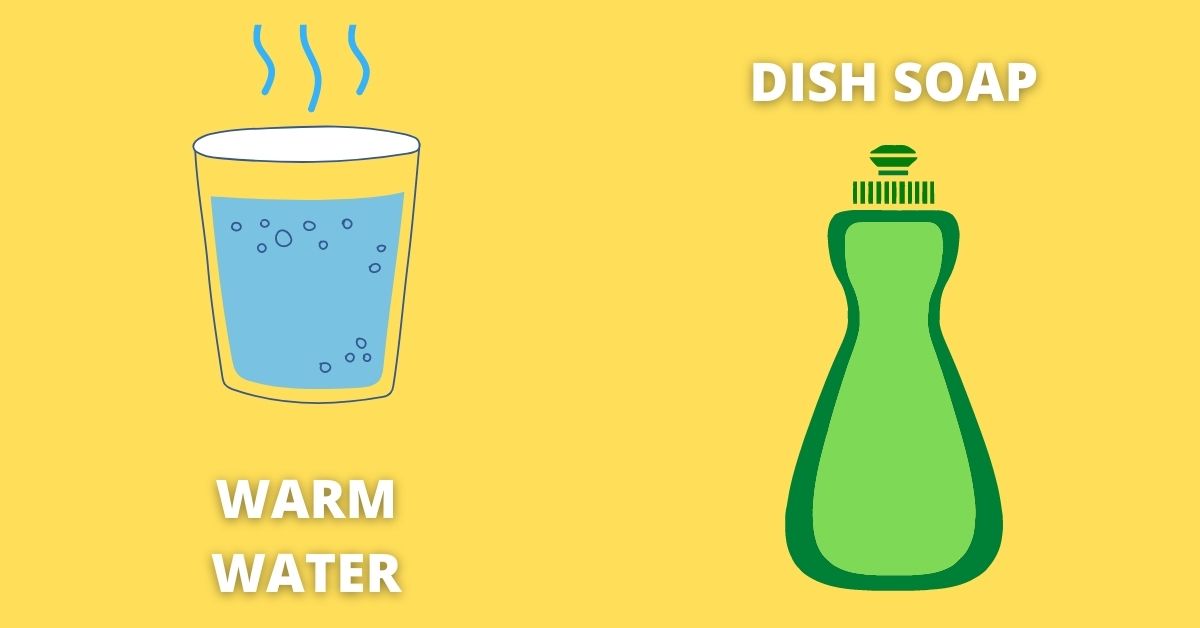
Whether your black tiles are smooth or rough, dish soap will bring that grease and grime out of the tiles and grout.
This is one of the safest methods of cleaning black bathroom floor tiles because it reduces the exposure of your tiles to chemical substances that can damage the tiles in the long run.
YOU’LL NEED
1- Warm water
2- Dishwashing soap
3- Sponge / brush
STEPS
STEP 1- Prepare a solution of warm water and dishwashing soap that would be enough to clean your floor. One or two spoons of soap and a bucket of water should be fine.
STEP 2- Soak your sponge or brush with the soap solution, and scrub the floor thoroughly until the stains are no longer visible.
STEP 3- Rinse the floor with warm water and allow it to dry.
This method is recommended if the black tiles are not too dirty; however, if the stains on the tiles are more pronounced, you should consider the other cleaning methods.
The next method is extremely simple.
Method 6: Using Salt
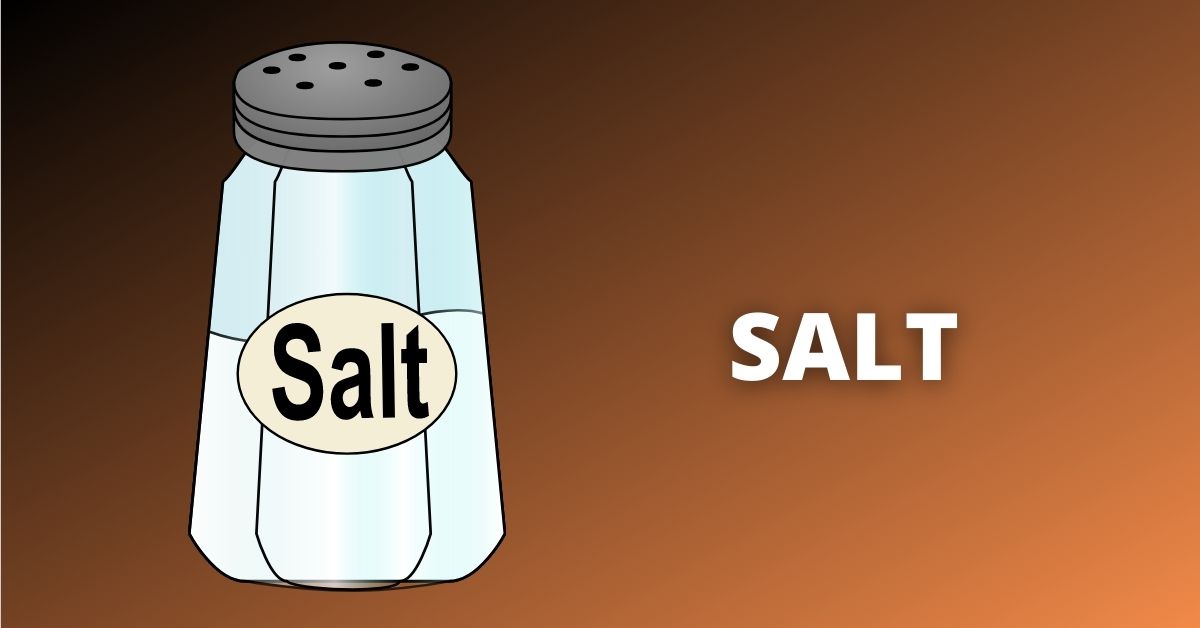
A saline solution is a good abrasive cleaning agent that removes mineral deposits on surfaces.
YOU’LL NEED
1 Tablespoon Salt
Scrub brush
Warm water
Towel/cloth
STEPS
STEP 1- Make a solution of water and salt. A glass of water should have 1 tablespoon of salt.
STEP 2- Pour the solution over the stained area and scrub with a soft brush in circular motions.
STEP 3- After the stains are dissolved, rinse with warm water.
STEP 4- Dry the floor with a clean cloth or a towel.
Method 7: Using Ammonia & Water
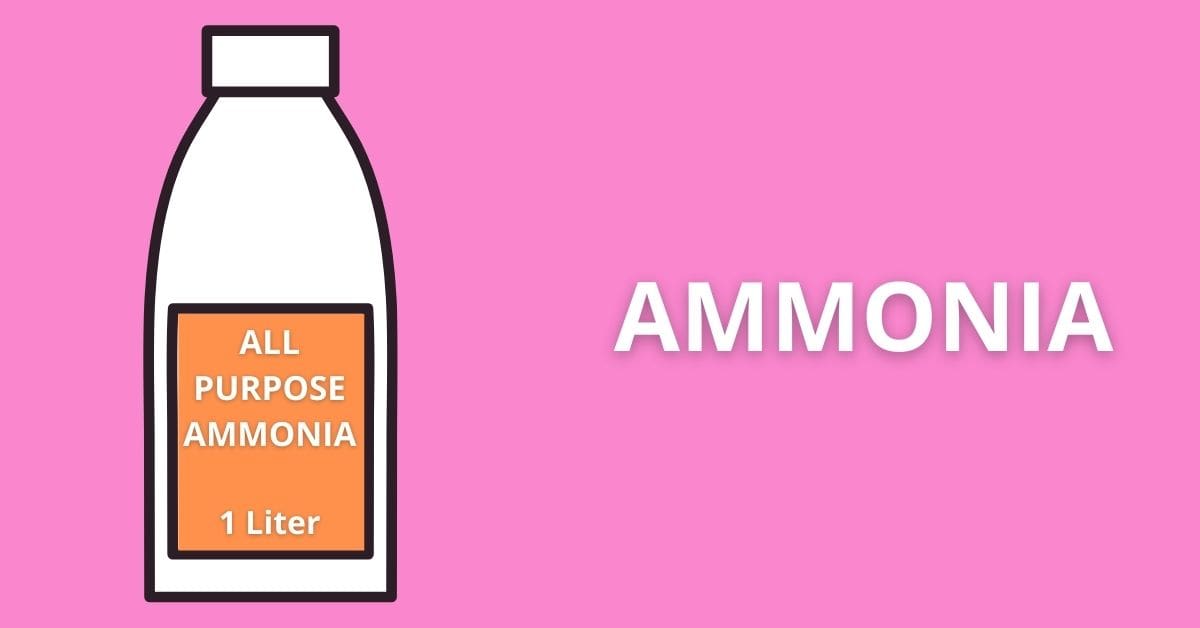
Ammonia is another substance that’s useful for cleaning because of its effectiveness at breaking down oil-based stains. However, since ammonia evaporates quickly, you have to mix it with water to clean your tiles.
YOU’LL NEED
1- Household Ammonia
2- Bucket of Water
3- Mop
STEPS
STEP 1- Open your bathroom doors and windows before you begin; this is because ammonia has a very strong and pungent smell.
STEP 2- Mix a cup of ammonia with a bucket of water.
STEP 3- Get a mop and dip it inside the mixture and use it to mop the floor carefully. Pay more attention to the areas of the tiles that have stubborn stains.
STEP 4- Repeat the process until the tiles are clean, and use clean water to rinse afterward to ensure no lingering smell of ammonia.
STEP 5- Keep your bathroom floor and windows open to allow the floor to dry.
Note: Never mix ammonia with chlorine bleach, as this produces toxic gases that can cause coughing, shortness of breath, chest pain, nausea, irritation to the throat, nose and eyes or pneumonia and fluid in the lungs. (4)
Some Things ‘Important’!
1- Usually, Pumice stone is quite effective in removing stains from tiles, but it should generally be avoided on colored tiles, which includes Black tiles, as it can leave noticeable scratches.
2- Keep a towel handy for wiping down the black tile floor after every use as this requires less effort than cleaning the stains after a while.
3- Hard water does not only stain the floors but also damages the appliances, pipes, and faucets. Consider installing a water softener in your home.
4- Magic erasers can be used effectively on porcelain tiles of a bathroom. These erasers are made of melamine foam and are gentle on porcelain.
Why Is It Important to Keep Black Tiles Clean
1- One of the flaws of black tiles is that they are not so good at hiding stains; you are more likely to quickly notice a stain on a black tile than you are to notice dirt on your nose.
2- Oil stains on your bathroom floor can result in accidents that can cause injury to you.
3- As damp environments like bathrooms can harbor mold and mildew, you may not notice it on black tiles, so cleaning them regularly will reduce the odds of mold growth. It would not be hygienic to be washing your body in a dirty environment.
Conclusion
You are wise to have been searching for ways to clean your black bathroom tiles. White stains take away all their royal look but at times, these tiles can be so deceiving too as they could make mold unnoticeable, so to remain healthy and live in a dirt-free environment, apply any of the methods suited to you and get those tiles clean again.
Cheers!

